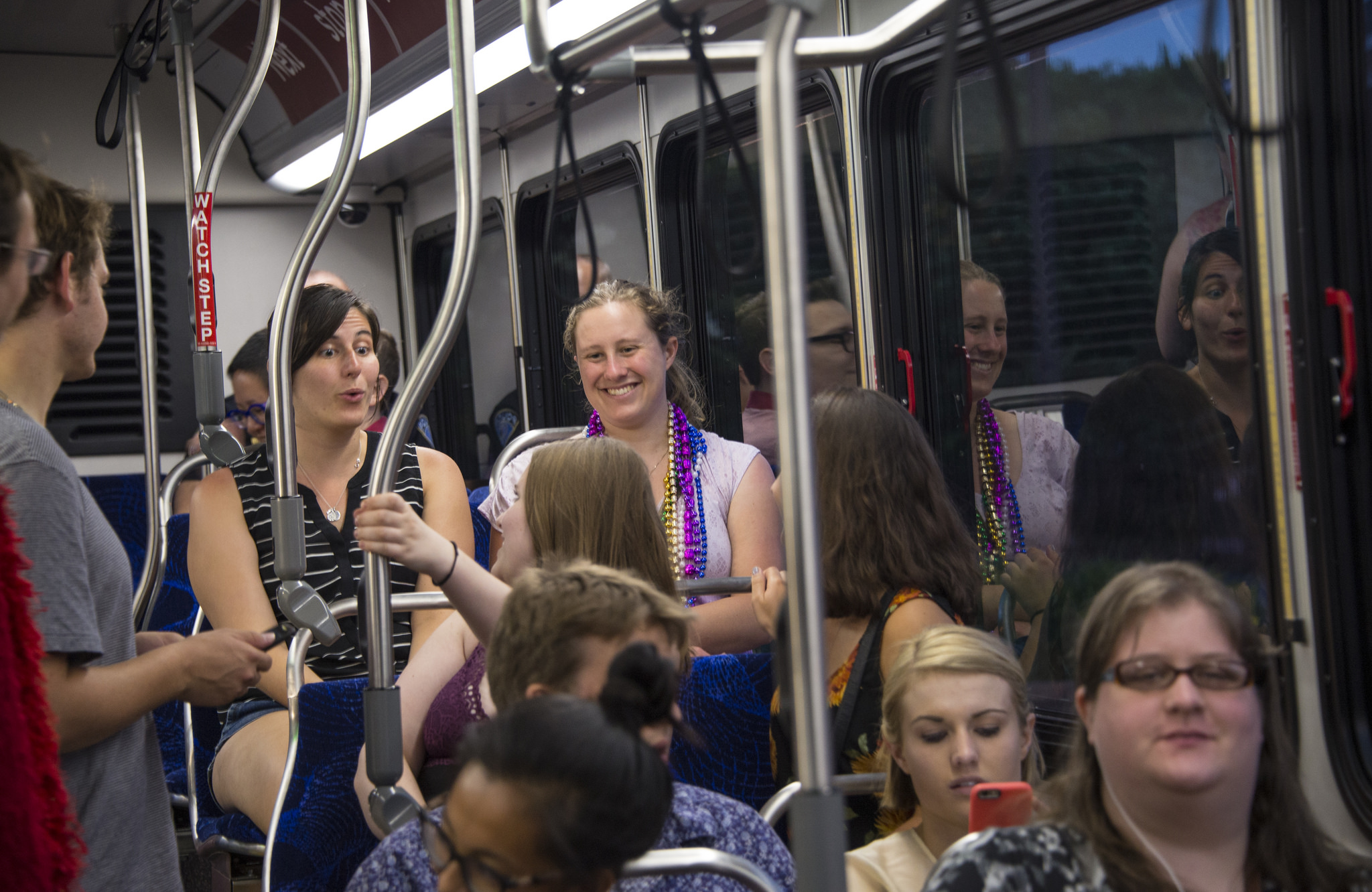 MINNEAPOLIS – For the sixth consecutive year, Metro Transit provided more than 80 million annual rides, reaching the third-highest annual ridership since 1981.
MINNEAPOLIS – For the sixth consecutive year, Metro Transit provided more than 80 million annual rides, reaching the third-highest annual ridership since 1981.
Metro Transit provided more than 82.6 million rides in 2016, averaging 266,916 rides each weekday. Ridership on the METRO Green Line also continued to grow while the region’s first rapid bus line boosted ridership in the corridor it serves.
Last year’s ridership was down about 4 percent from 2015, when ridership reached its highest point in 34 years. Low gas prices and the prolonged closure of Nicollet Mall were among the factors that contributed to the drop in ridership.
“Annual ridership is a good measure of our progress but it doesn’t tell the complete story,” Metro Transit General Manager Brian Lamb said. “Our ridership has grown in nine of the last 11 years – a period of sustained growth we haven’t seen in this region for nearly a generation.”
The past year included several ridership successes, including:
> Ridership on the METRO Green Line increased for the second straight year, finishing with 12.7 million rides, a 2.5 percent increase from 2015. Average weekday ridership was 39,386, just shy of the 2030 projection of 41,000 average weekday rides.
> Around 830,000 rides were taken during the first six months of service on the A Line, the region’s first rapid bus line. Average weekday ridership on the A Line and local Route 84 has increased by about one-third since rapid bus service began in June, to nearly 5,400 average weekday rides.
> Regular weekday ridership on the Northstar commuter line (excluding special events) increased just over 1 percent, to 2,369 average weekday rides.
> A new single-day ridership record was set on Sept. 1, 2016, when nearly 370,000 rides were provided. Metro Transit also provided the most express and regular route rides to the Minnesota State Fair in the agency’s history in 2016.
> A renewed emphasis on theHigh Frequency Network – routes with service every 10 – 15 minutes – brought promising early results. After a portion of Route 11 in Minneapolis was added to the High Frequency Network last spring, ridership increased 10 percent.
The successes were tempered by declines in ridership on buses and the METRO Blue Line, which in 2015 saw its highest annual ridership since opening a decade earlier.
Metro Transit’s research suggests that a $1 drop in gas prices leads to a loss of 300,000 rides each month. Last year’s average gas prices were about half what they were in 2013. Ongoing construction on Nicollet Mall in downtown Minneapolis is estimated to have contributed to the loss of up to 114,000 monthly rides.
“These factors and broader changes in the transportation industry shaped the way people got around last year,” Lamb said. “What hasn’t changed is the fact that our region is growing and we simply can’t build enough roads for everyone to drive all the time. As the demand for safe and reliable transit grows, Metro Transit will be there to answer the call.”
| |
2016 Ridership |
2016 Average Weekday Ridership |
|
Bus
|
58,119,824
|
194,658*
|
|
Green Line
|
12,701,922
|
39,386
|
|
Blue Line
|
10,261,707
|
30,337
|
|
A Line
|
829,999
|
4,521
|
|
Northstar
|
711,167
|
2,534
|
|
Total
|
82,624,619
|
266,916
|
Metro Transit is an operating division of the Metropolitan Council, offering an integrated network of buses, light rail and commuter rail. In 2016, Metro Transit was named the American Public Transportation Association's System of the Year.
Contact: Public Relations Manager Howie Padilla, 612-349-7089 or [email protected]